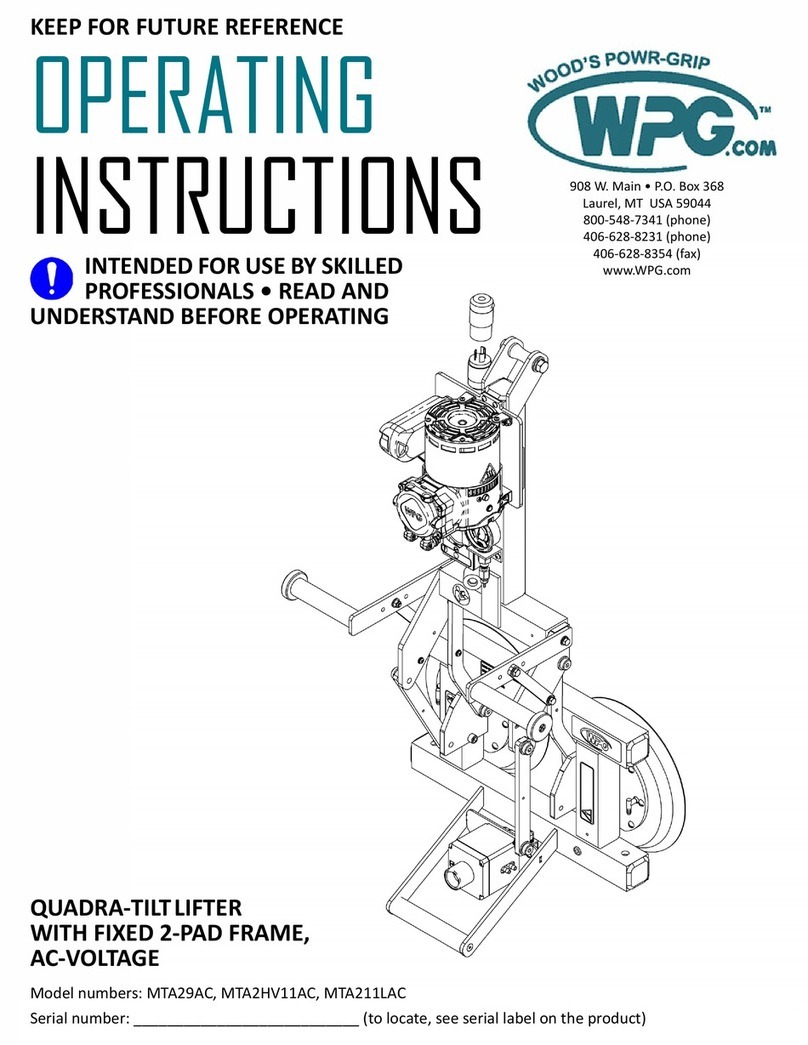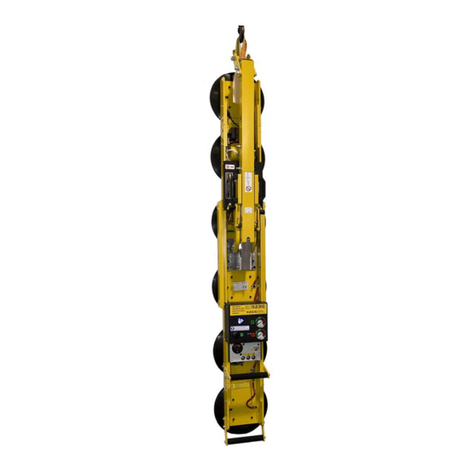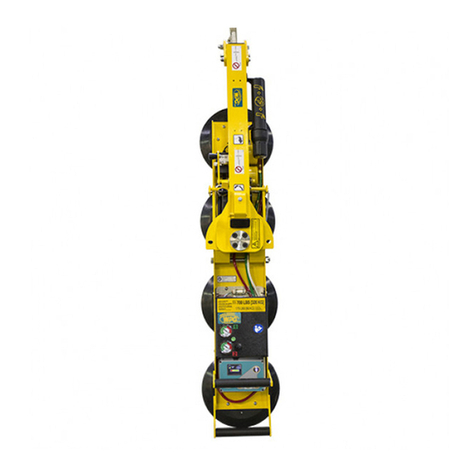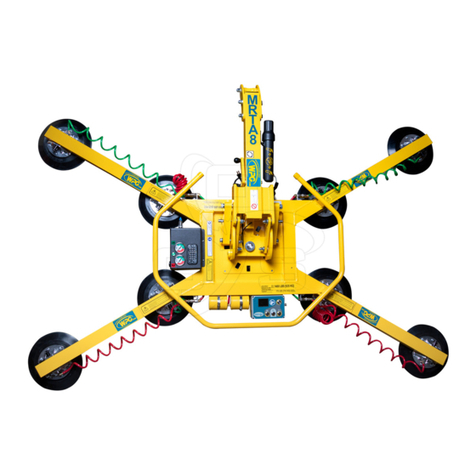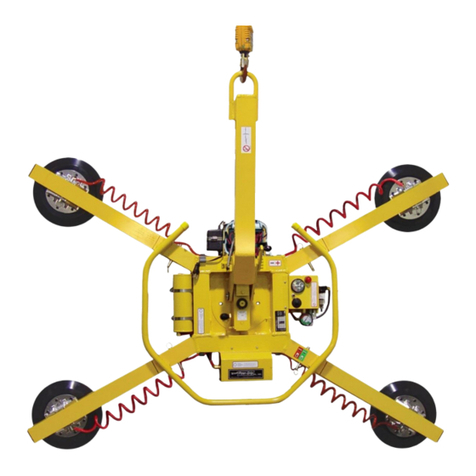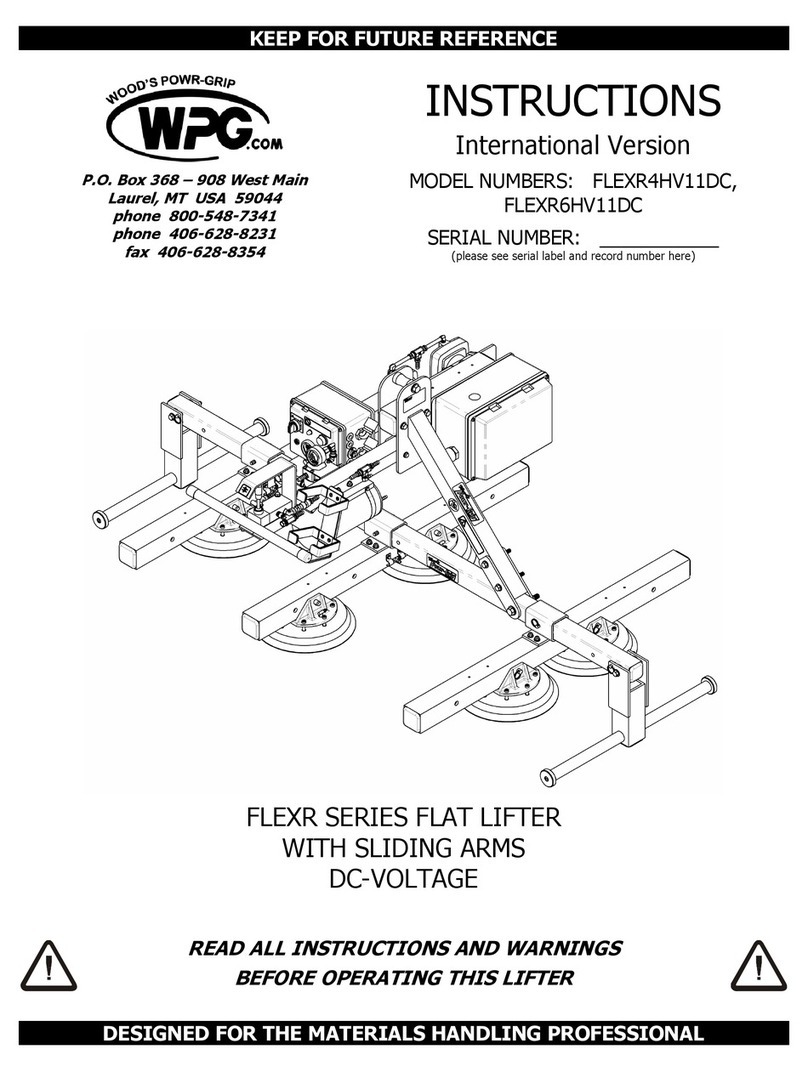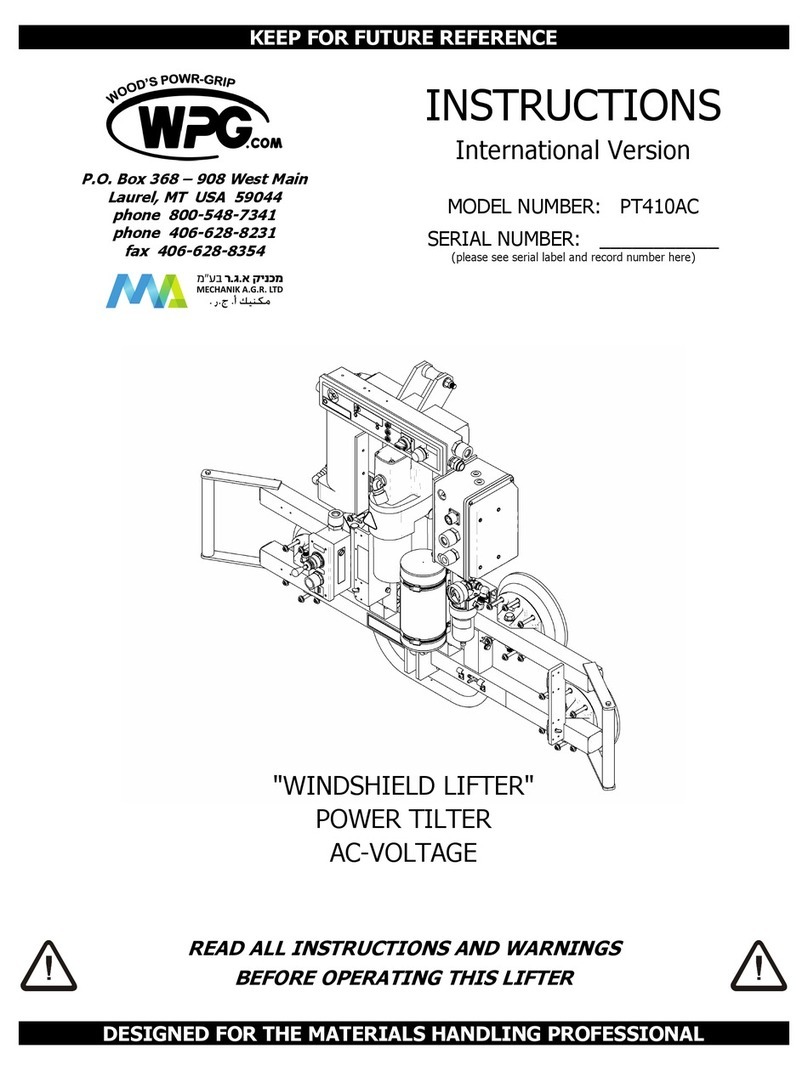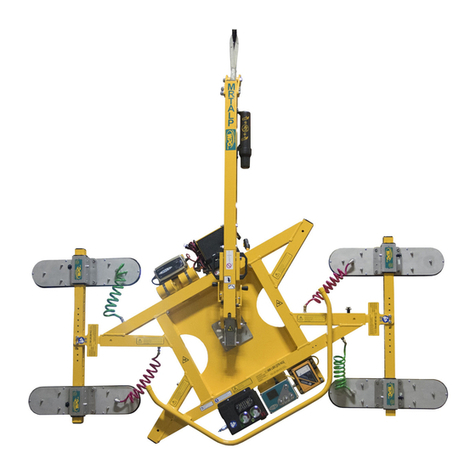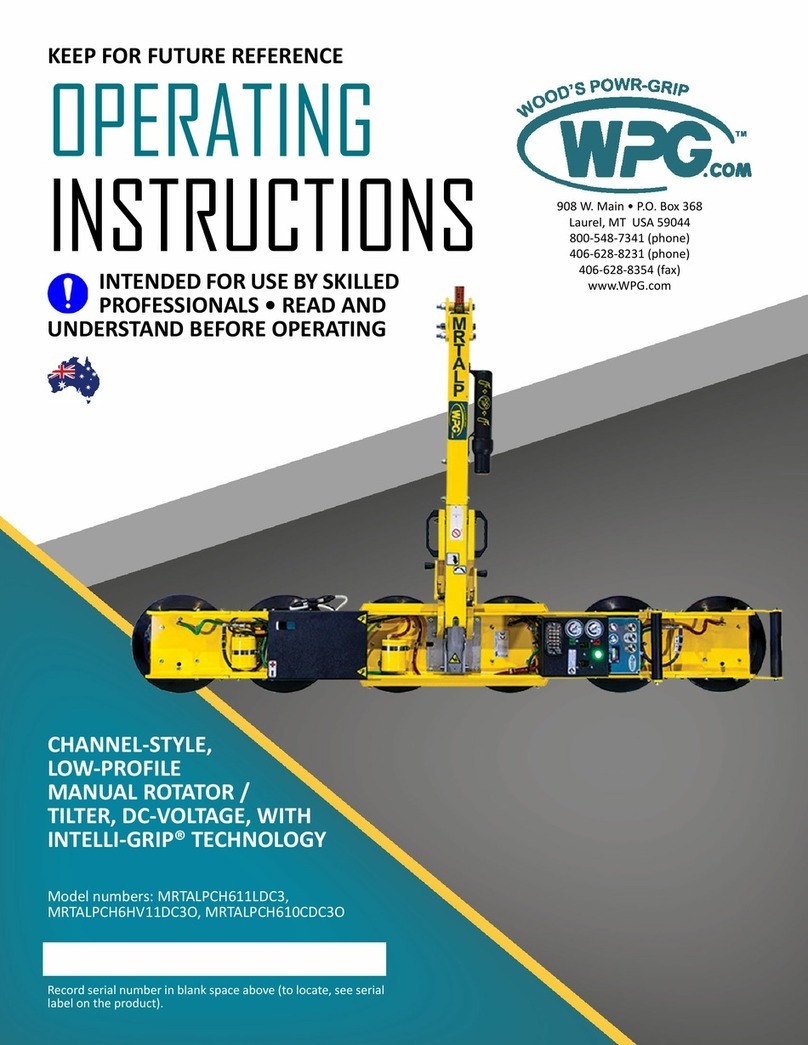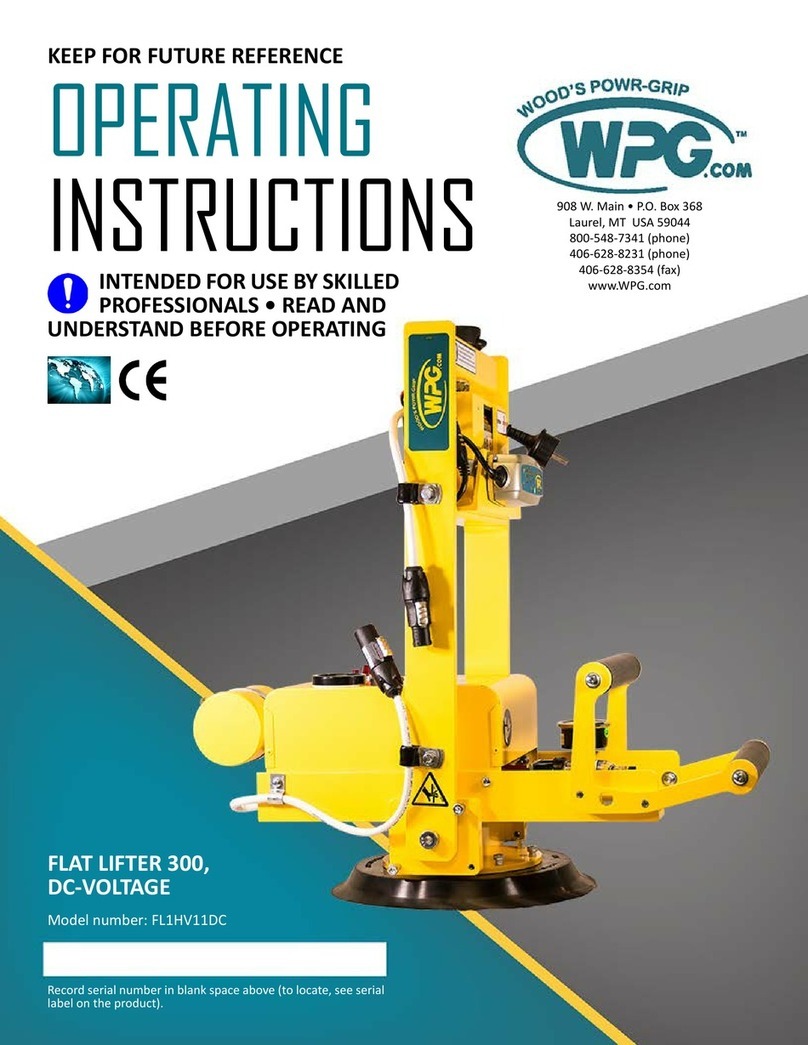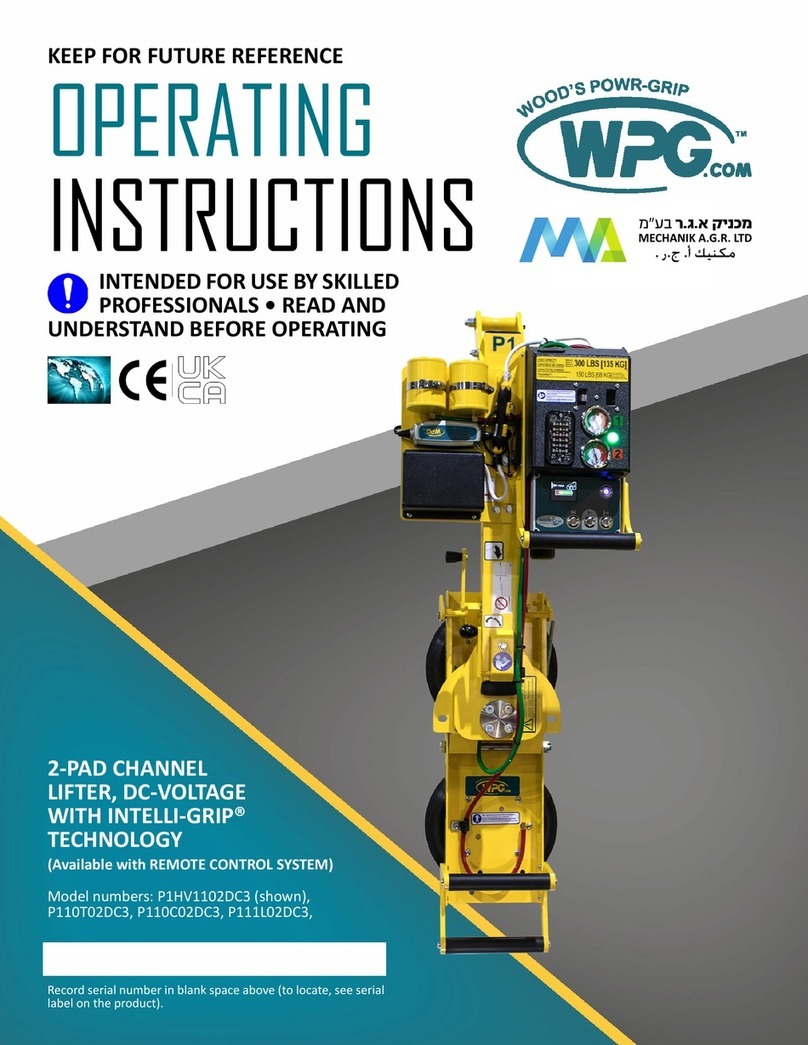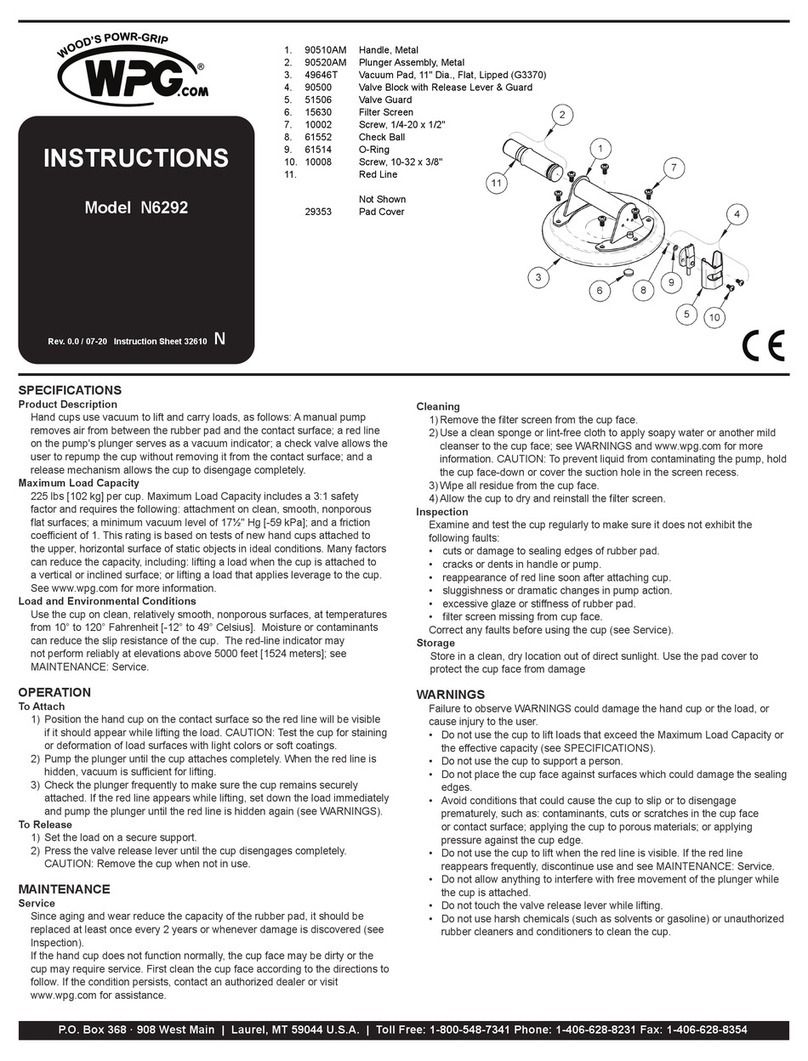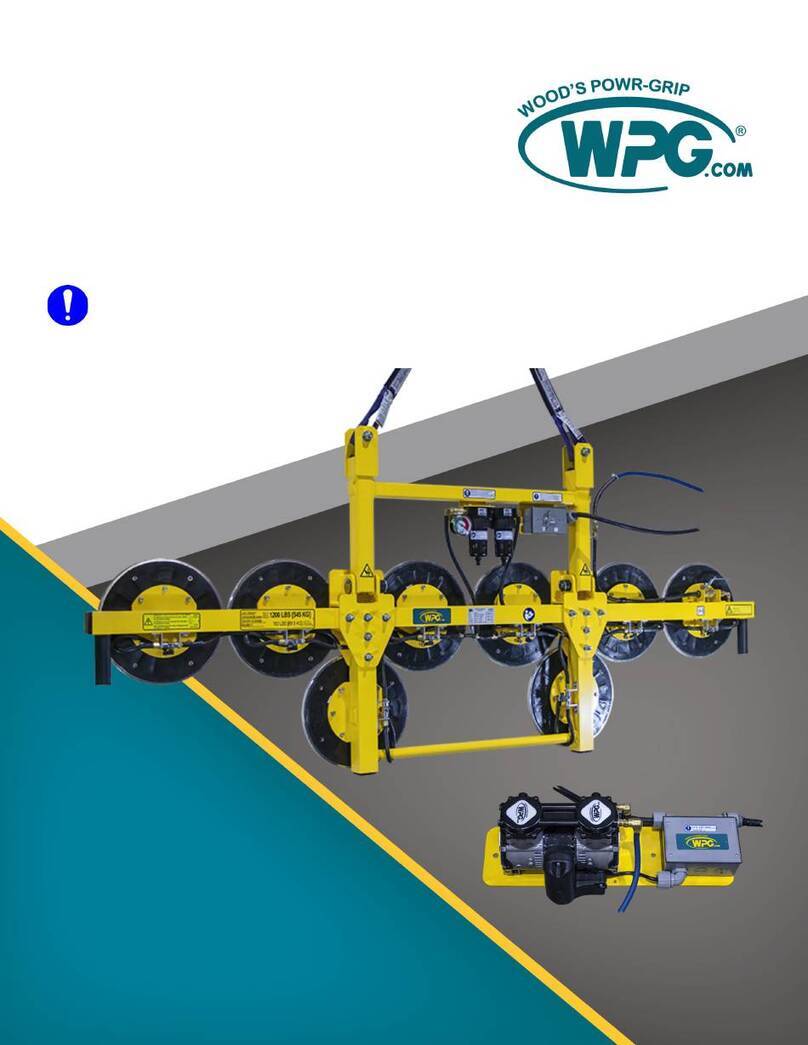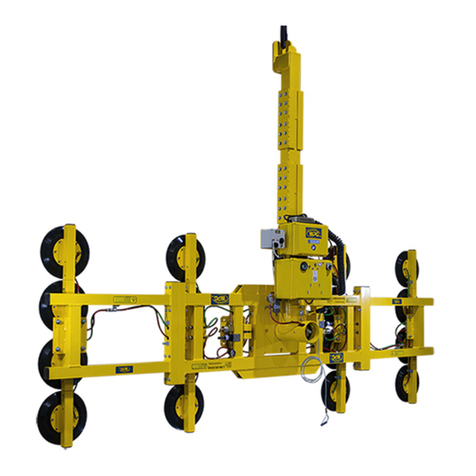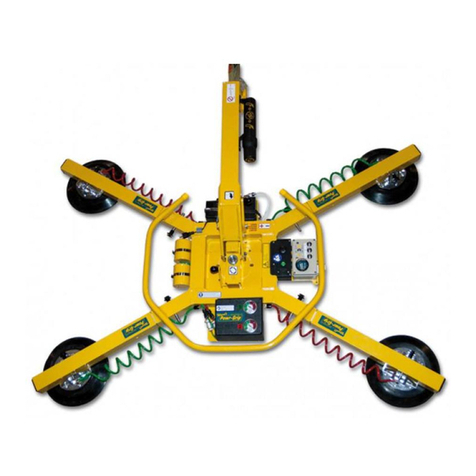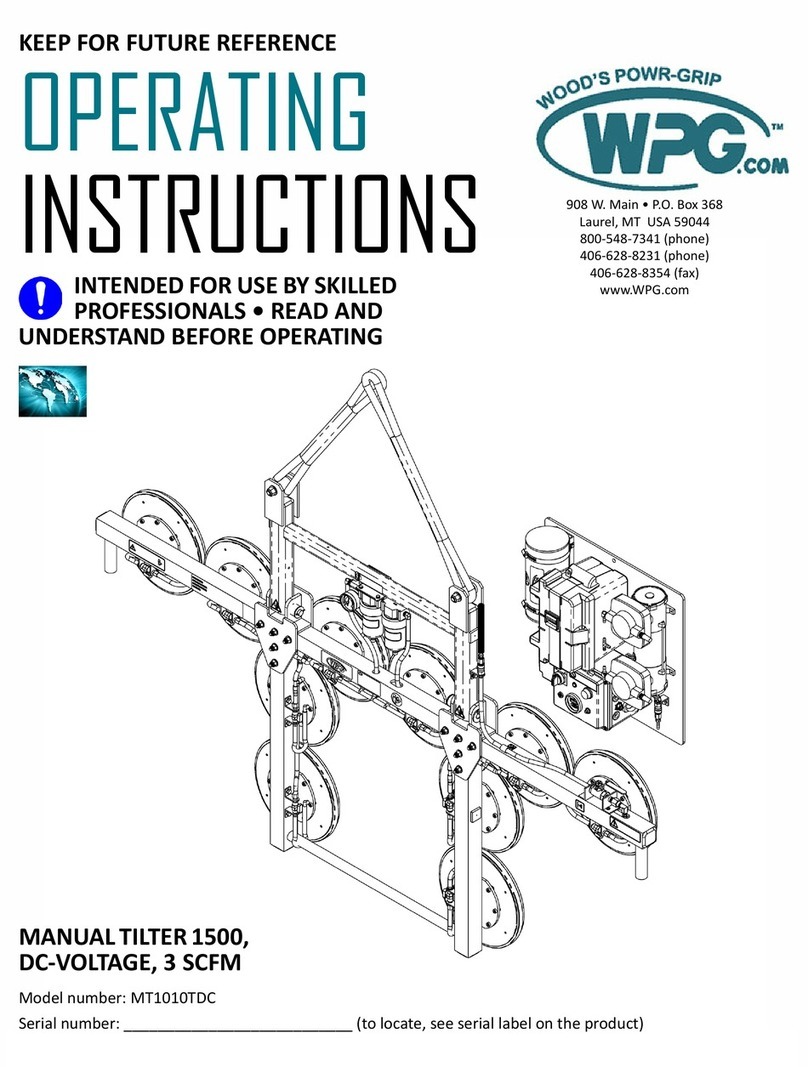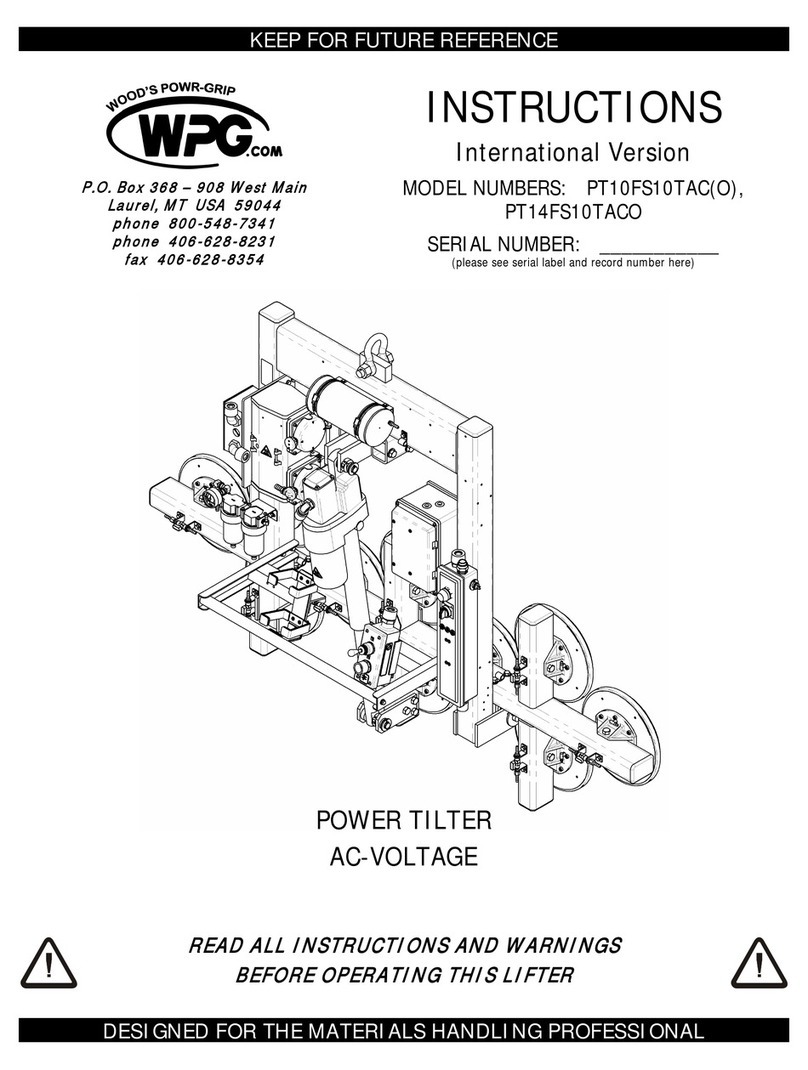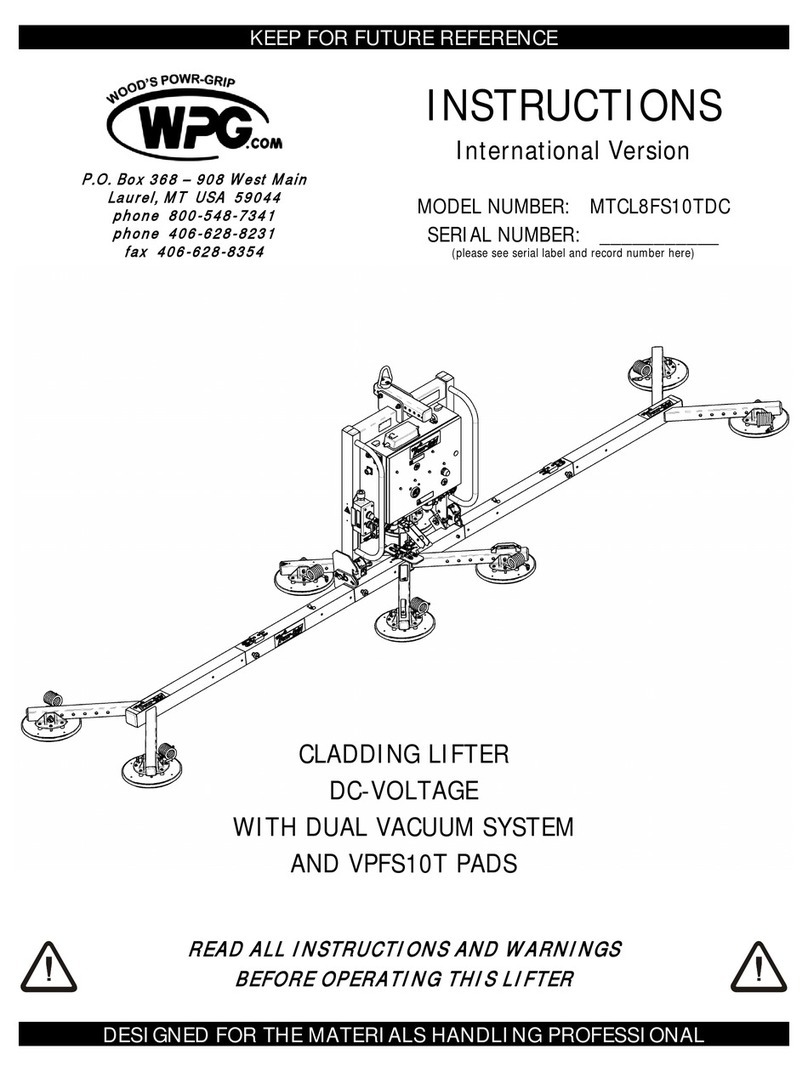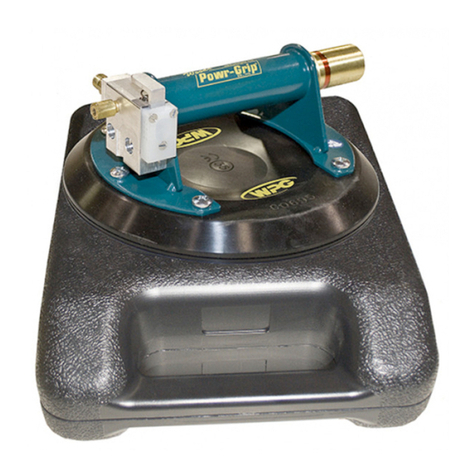
Rev 5.2/9-16 1 MRTARC8-DC: #35076RC
TABLE OF CONTENTS
SPECIFICATIONS............................................................................................................ 3
WARNINGS ..................................................................................................................... 4
OPERATING FEATURES................................................................................................... 5
ASSEMBLY....................................................................................................................... 7
TO SET UP THE LIFTER ................................................................................................................7
TO CHANGE THE PAD FRAME CONFIGURATION................................................................................8
To Connect/Disconnect Vacuum Hoses..........................................................................................................9
To Reposition (or Remove) Movable Pad Mounts .........................................................................................10
To Install/Remove Extension Arms..............................................................................................................10
About Secondary Rotation Stops.................................................................................................................10
INTENDED USE .............................................................................................................11
LOAD CHARACTERISTICS...........................................................................................................11
OPERATING ENVIRONMENT .......................................................................................................12
DISPOSAL OF THE LIFTER ..........................................................................................................13
OPERATION ..................................................................................................................14
BEFORE USING THE LIFTER........................................................................................................14
Taking Safety Precautions ..........................................................................................................................14
Performing Inspections and Tests...............................................................................................................14
Confirming the Pad Frame Configuration.....................................................................................................15
Preparing to Use the Optional Remote Control System.................................................................................15
TO APPLY THE PADS TO A LOAD..................................................................................................16
Powering up the Lifter................................................................................................................................16
Positioning the Lifter on the Load ...............................................................................................................16
Sealing the Pads against the Load...............................................................................................................17
Reading the Vacuum Gauge .......................................................................................................................17
Vacuum Level on Optimal Surfaces .............................................................................................................18
Vacuum Level on Other Surfaces ................................................................................................................18
TO LIFT AND MOVE THE LOAD ....................................................................................................19
About the Tilt Linkage................................................................................................................................19
About the Optional Tilt Lock .......................................................................................................................19
Load Capacity and the Lift Light..................................................................................................................20
Monitoring Vacuum Indicators ....................................................................................................................20
Low Vacuum Warning Buzzer ...............................................................................................................20
Controlling the Lifter and Load....................................................................................................................21
In Case of Power Failure ............................................................................................................................21
TO ROTATE THE LOAD EDGEWISE................................................................................................21
TO TILT THE LOAD ...................................................................................................................22
TO RELEASE THE PADS FROM THE LOAD .......................................................................................23
AFTER USING THE LIFTER..........................................................................................................24
Storing the Lifter........................................................................................................................................24
